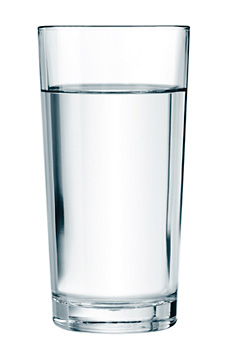|
 What
is Hard Water? What
is Hard Water?
Hard water is the most common
problem found in the average home. Hard water is water
that contains dissolved hardness minerals above 1 GPG.
What are Hardness
Minerals?
Calcium, manganese and magnesium
are the most common.
How do you Measure
Hardness?
Parts per million or grains per
gallon are the most common. One part per million (PPM)
is just what it says: out of one million units, one
unit. Grains, or grains per gallon (GPG) is a weight
measurement taken from the Egyptians; one dry grain of
wheat, or about 1/7000 of a pound. It takes 17.1 PPM to
equal 1 GPG.
My Water is Hard; Now
What?
If your water tests over 3 GPG
hard, you should mechanically soften it. Softening water
that is less than 3 GPG, while it makes your shaving and
bathing more comfortable, is considered a luxury due to
the fact that the cost is more than your savings. Over 3
GPG, you will save enough to pay for the cost and
maintenance of a water conditioner.
How Does a UV System
Work?
Water is purified as it runs
through a stainless steel chamber containing a UV lamp.
As water flows past the lamp, illness-causing
microorganisms receive a lethal dose of UV light that
attacks their DNA and alters their ability to reproduce.
Harmful bacteria and viruses are deactivated, and your
family is safe!
What Are
Chlorine-Resistant Microorganisms?
By installing a UV system, you
can be confident you're protected from
chlorine-resistant microorganisms, such as
Cryptosporidium and Giardia. All water systems can be
vulnerable to these microbes given the right conditions.
Cryptosporidium is resistant to chlorine and has become
a common waterborne disease everywhere. This microscopic
bug was responsible for many deaths and widespread
illness when it contaminated the Milwaukee, Wisconsin,
drinking water supply in 1993, sickening over 400,000
people and killing over a hundred.
What is Reverse Osmosis?
This is a process that is often
described as filtration. Reverse Osmosis is sometimes
explained as a filter because it is much easier to
visualize using those terms. One should remember that
osmosis is how we feed each cell in our bodies: As our
blood is carried into the smallest of capillaries in our
bodies, nutrients actually pass through the cell wall to
sustain it's life. Reverse Osmosis is just the opposite:
We take water with "nutrients" (in this case, junk) in
it, and apply pressure to it against a certain type of
membrane, and, presto -- out comes "clean" water.
Contact us today to find
out how Water Treatment Consultants can help you with
any number of water treatment solutions to suit your
needs.
We'll be happy to answer
any questions you have about water treatment.
|


